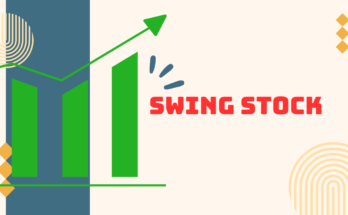Margin of Safety :
Are you planning to invest money in stock?
if yes then you should know the Margin of Safety .
The margin of safety is a term that can be used in different ways, depending on the context.
Here are two common applications of the Margin of Safety concept:
what is Margin of Safety (MOS) :
1). In investing, (MOS =rv-mp) is the difference between the real value(rv) of a stock and market price(mp) of stock. The real value of a stock is based on things like the company’s assets, earnings, and future prospects.
Market price of a stock changes, may be price can be higher or lower than the real value of the stock. because of factors like supply and demand, emotions, expectations, and rumors.
Here’s where the fun begins. Feel like a shrewd investor. You adhere to the margin of safety principle. This implies that you attempt to purchase stocks at a discount to their actual value.
How come? It’s kind of like finding a deal on something. Also, in the event that the price drops, it keeps you from losing money.
Consider the following scenario: you believe a stock is truly worth $100, but it is only selling for $50 on the market. That represents a 50% safety margin. This implies that the stock can be purchased for 50% of its actual worth. It functions as a backup plan in the event that costs drop.
So, the margin of safety helps investors make good decisions and keep their money safe.
2). In accounting, The difference between actual and break-even sales is known as the margin of safety in accounting. The money that a business makes by selling its goods or services is known as actual sales. The bare minimum of sales required by a business to meet its overhead is known as break-even sales. The business is turning a profit if real sales exceed break-even sales. The business is losing money if the actual sales are less than the break-even sales. The margin of safety indicates the amount of actual sales that can drop before a loss is incurred by the business.
Margin of Safety Formula:
For calculating Margin of Safety, First, you should evaluate the stock’s intrinsic value in order to compute the margin of safety. There are a lot of techniques, including the dividend discount model (DDM), the earnings multiplier model (EMM), and discounted cash flow (DCF) analysis.
You can use any method. The growth rate, discount rate, dividend payment ratio, and earnings per share are only a few of the inputs and assumptions that these systems require.
The margin of safety can be computed using the following formula once you know the stock’s intrinsic value:
margin of safety formula =1- (Present stock price / intrinsic value) .
A percentage is used to express the outcome. The stock is more cheap and investing in it carries less risk when the proportion is larger. Lets take a example to understand better: The margin of safety is 50%, for instance, if the stock price is $50 right now and its intrinsic value is $100. This indicates that the investor has a 50% buffer in case the stock price declines further and that the stock is selling for half of its true worth.
The well-known value investors Warren Buffett and Benjamin Graham popularized the margin of safety concept. They advise purchasing equities only when there is a significant margin of safety—50% or greater, . this way, they can reduce the chances of overpaying for a stock and increase the potential returns.
Intrinsic value of a stock:
The value that an investment possesses when it accurately projects a stock’s actual value using anticipated earnings and cash flows is known as intrinsic value. It is not the same as the market price of the stock, which depends on many factors such as supply and demand, sentiments, expectations, and rumors.
Finding inexpensive or expensive stocks and improving investing choices are both made possible by a stock’s intrinsic value.
You can calculate the natural value of a stock using numerous styles, but then I am calculating the natural value using the DCF analysis. It’s necessary to first cipher the company’s unborn cash overflows, blink them by a rate that accounts for the occasion cost and threat of copping
the stock, and also divide the result by the total number of outstanding shares.
Intrinsic value = ∑nt =1 CFt /(1+r) t
where CFt = cash inflow in time t
r= reduction rate
n = number of times
Intrinsic va
For example, if a company has a cash flow of $100 million in the first year, growing at 5% annually for the next 10 years, a discount rate of 10%, and 50 million shares outstanding, the intrinsic value of the stock is:
Intrinsic value = 100/(1+0.1)^1+105/(1+0.1)^2+…+162.89/(1+0.1)^10
Intrinsic value = 857.34 million
Intrinsic value per share = 50857.34
Intrinsic value per share = $17.15
Disclaimer: The financial and stock market information provided on Blogbia is intended for informational purposes only and should not be construed as investment advice. It is highly recommended that you conduct your own research and seek guidance from financial experts before making any investment decisions. The decision to continue reading the content on this website is entirely at your own discretion, and it shall be understood as an express acknowledgment and agreement that Blogbia shall be released from any potential legal action or enforceable claims that may arise.



